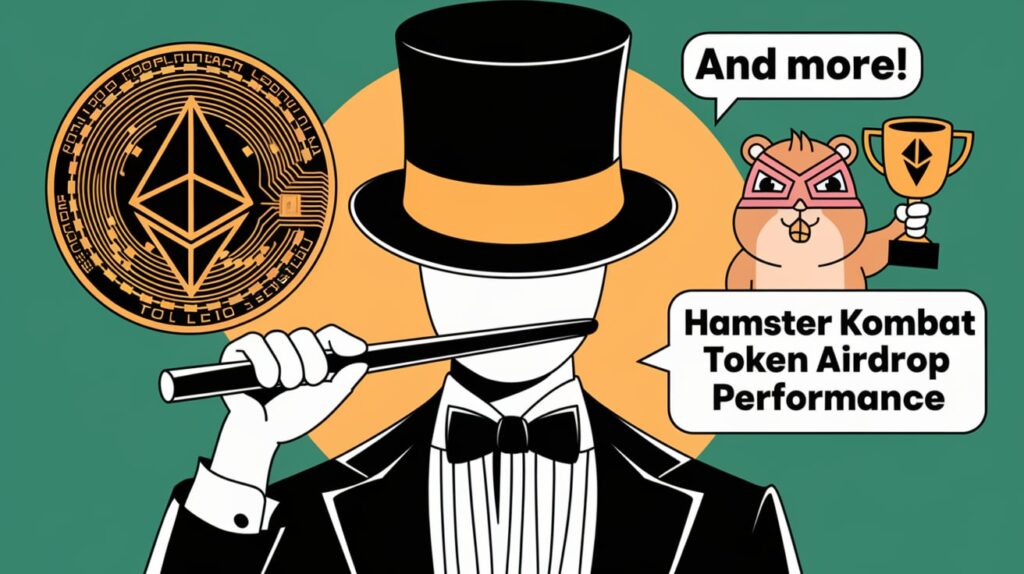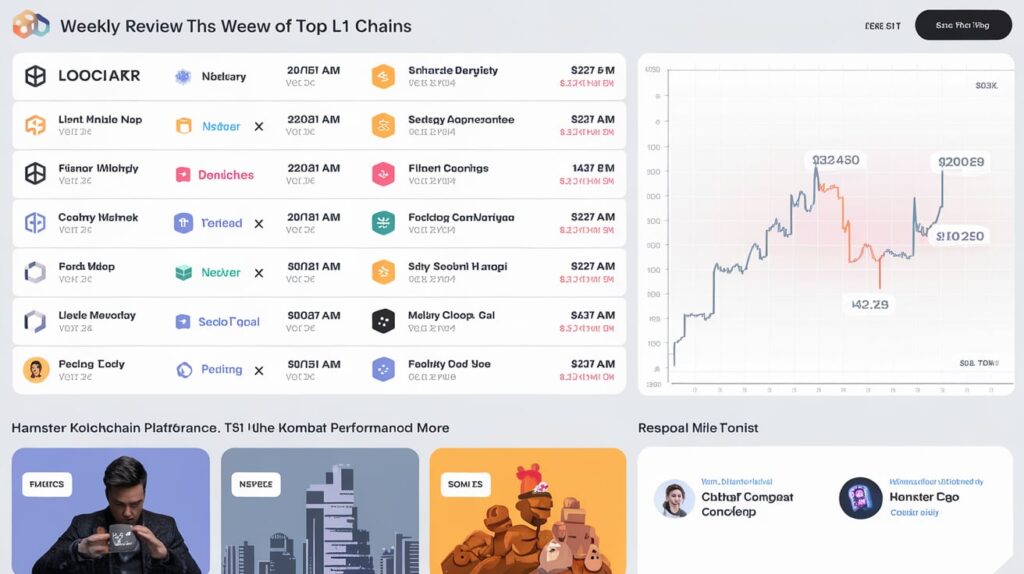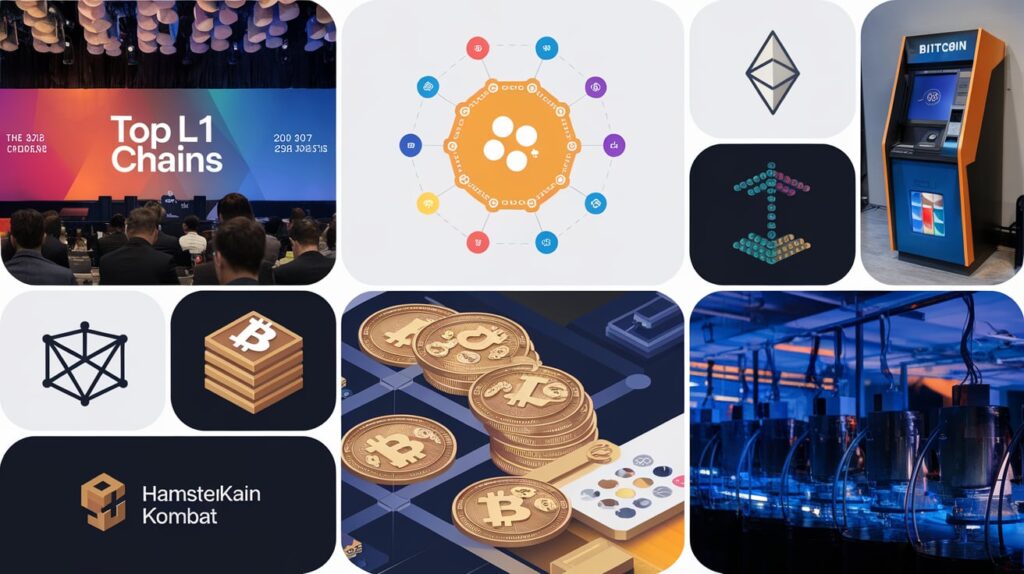
Top L1 Chains, Hamster Kombat Token Airdrop Performance, And More: Week in Review.
The blockchain space is constantly evolving, with new developments making headlines every week. In this week’s review, we’ll cover the performance of leading Layer 1 (L1) chains, the much-anticipated Hamster Kombat Token airdrop, and other key events that shaped the industry. The world of blockchain and cryptocurrency is fast-paced, and keeping up with the latest trends is essential for investors, developers, and enthusiasts alike. So, let’s dive into the major highlights of this week.
What Are Layer 1 Chains?
Layer 1 (L1) chains are the foundational blockchains on which various decentralized applications (dApps), smart contracts, and tokens are built. Examples of L1 chains include Bitcoin, Ethereum, Binance Smart Chain, and others. These blockchains operate independently and are responsible for securing the network, validating transactions, and ensuring decentralization.
The significance of L1 chains has been growing due to the surge in decentralized finance (DeFi), non-fungible tokens (NFTs), and the ever-expanding cryptocurrency market. As a result, both retail and institutional investors closely follow the performance of these chains to assess the state of the broader crypto market.
Top Layer 1 Chains: Weekly Performance Overview
Over the past week, several L1 chains have demonstrated resilience and innovation. Here’s a breakdown of their performance:
1. Ethereum (ETH)
Ethereum remains the most prominent L1 chain in the blockchain ecosystem. Over the past week, it has continued to dominate the smart contract platform space, with increased activity in DeFi protocols and NFTs. Ethereum’s ongoing transition from proof-of-work (PoW) to proof-of-stake (PoS), through the ETH 2.0 upgrade, remains a focal point for the community. This transition is expected to reduce energy consumption and increase the network’s scalability.
- Performance: Ethereum’s price saw minor fluctuations but remains strong, hovering around the $1,600 to $1,700 range.
- Key Update: Ethereum staking reached an all-time high this week, with over 27 million ETH staked as users prepare for the network’s full PoS implementation.
2. Solana (SOL)
Solana has solidified its position as a top competitor to Ethereum, offering fast transaction speeds and lower fees. This week, Solana’s ecosystem expanded with new DeFi protocols and NFT marketplaces joining the platform.
- Performance: Solana experienced a 6% price increase over the week, reflecting the network’s growing demand.
- Key Update: Solana partnered with leading gaming projects, fueling the chain’s reputation as a go-to platform for blockchain gaming.
3. Binance Smart Chain (BSC)
Binance Smart Chain continues to attract developers due to its low-cost transactions and fast throughput. BSC has been gaining attention in the DeFi space, and this week saw increased capital flowing into various liquidity pools.
- Performance: BSC’s native token, BNB, saw a steady performance, with a 3% rise throughout the week.
- Key Update: Binance announced new staking programs that offer attractive returns, leading to a spike in user activity.
4. Avalanche (AVAX)
Avalanche has emerged as a fast-growing L1 chain, known for its focus on scalability without compromising decentralization. This week, the Avalanche network introduced a series of upgrades aimed at reducing latency and enhancing developer tools.
- Performance: AVAX witnessed a 4% rise in value, closing the week on a positive note.
- Key Update: Avalanche saw the launch of several new dApps, boosting the network’s overall transaction volume and user engagement.
5. Cardano (ADA)
Cardano is well-known for its academic approach to blockchain development. Over the past week, Cardano continued its efforts in developing real-world use cases, particularly in regions like Africa.
- Performance: Cardano’s price fluctuated, but the community remains optimistic due to the ongoing development of dApps on the chain.
- Key Update: Cardano developers teased a new governance model that could set a new standard for decentralized decision-making in blockchain.

Hamster Kombat Token Airdrop Performance
One of the most significant events this week was the Hamster Kombat token airdrop. Hamster Kombat, a rapidly growing Web3 gaming platform, announced its long-awaited token airdrop for early supporters and players. The airdrop was aimed at rewarding the community with HMSTR tokens, which can be used for in-game purchases, staking, or trading on decentralized exchanges (DEXs).
The Airdrop Breakdown
The Hamster Kombat team distributed a total of 50 million HMSTR tokens to eligible participants. The eligibility criteria included holding a minimum of 1,000 HMSTR tokens in their wallets or having completed in-game achievements in Hamster Kombat’s ecosystem.
Airdrop Highlights
- Performance: Following the airdrop, the HMSTR token saw a significant surge in trading volume on popular DEXs like Uniswap and PancakeSwap. The token’s price spiked by 35% within 24 hours of the airdrop due to high demand.
- User Reaction: The community reacted positively to the airdrop, with many players sharing their excitement on social media platforms like Twitter and Telegram.
- Token Utility: HMSTR token holders can stake their tokens to earn rewards, trade them for other cryptocurrencies, or use them to purchase in-game items in the Hamster Kombat ecosystem.
Future Outlook
With the success of the airdrop, the Hamster Kombat team hinted at more upcoming developments, including new game modes, partnerships, and additional airdrops for active community members. The airdrop has further solidified Hamster Kombat’s position in the growing Web3 gaming sector.

Other Key Developments of the Week
Apart from the top L1 chains and Hamster Kombat, here are a few other noteworthy events from this week in the blockchain and crypto space:
1. Bitcoin ETF Approval Delayed
The U.S. Securities and Exchange Commission (SEC) delayed its decision on several Bitcoin exchange-traded funds (ETFs), pushing the deadline to early next year. The delay caused minor dips in the Bitcoin price, but the market remains optimistic about eventual approval.
2. DeFi Grows Despite Regulatory Uncertainty
Decentralized Finance (DeFi) protocols continue to attract users, even as regulators increase their scrutiny. Protocols like Uniswap and Aave saw increased activity this week, with total value locked (TVL) rising by 7%.
3. NFT Market Rebounds
After a period of decline, the NFT market saw a rebound this week, with several high-profile sales boosting market sentiment. Ethereum-based NFT platforms like OpenSea and Blur witnessed a surge in trading volume.
Conclusion
The world of blockchain and cryptocurrency saw major developments this week, from the steady growth of top L1 chains to the success of the Hamster Kombat token airdrop. As the industry evolves, these chains and platforms will continue to innovate, shaping the future of Web3, gaming, and decentralized applications.
Staying informed about weekly developments in this space is crucial for making informed decisions, whether you’re a developer, investor, or enthusiast.

FAQ Section
Q1: What is an L1 chain?
A: A Layer 1 (L1) chain refers to a base blockchain that operates independently, such as Bitcoin, Ethereum, or Solana. These blockchains serve as the foundation for dApps, smart contracts, and tokens.
Q2: What is Hamster Kombat?
A: Hamster Kombat is a Web3 gaming platform that allows players to engage in virtual battles using NFTs and cryptocurrency. It has gained popularity due to its unique gameplay mechanics and strong community involvement.
Q3: How can I participate in the Hamster Kombat airdrop?
A: To participate in the Hamster Kombat airdrop, you need to meet certain eligibility criteria, such as holding a minimum number of HMSTR tokens or completing in-game achievements. Be sure to follow the official Hamster Kombat announcements for future airdrop details.
Q4: Why are L1 chains important in the blockchain ecosystem?
A: L1 chains are crucial because they provide the underlying infrastructure for decentralized applications, tokens, and smart contracts. They ensure security, decentralization, and scalability within the blockchain network.
Q5: What are some other use cases for HMSTR tokens?
A: HMSTR tokens can be used for in-game purchases, staking to earn rewards, or trading on decentralized exchanges. As the Hamster Kombat ecosystem grows, more utility for the tokens is expected to be introduced.
Q6: Will the price of the HMSTR token continue to rise after the airdrop?
A: The price of the HMSTR token is influenced by market demand, in-game utility, and broader trends in the Web3 gaming sector. While the airdrop provided a boost, future developments in Hamster Kombat will play a key role in determining the token’s long-term price.
Q7: How do DeFi protocols benefit from L1 chains?
A: DeFi protocols rely on L1 chains to execute smart contracts and facilitate decentralized transactions. L1 chains like Ethereum and Binance Smart Chain are popular for hosting DeFi platforms due to their security and scalability.